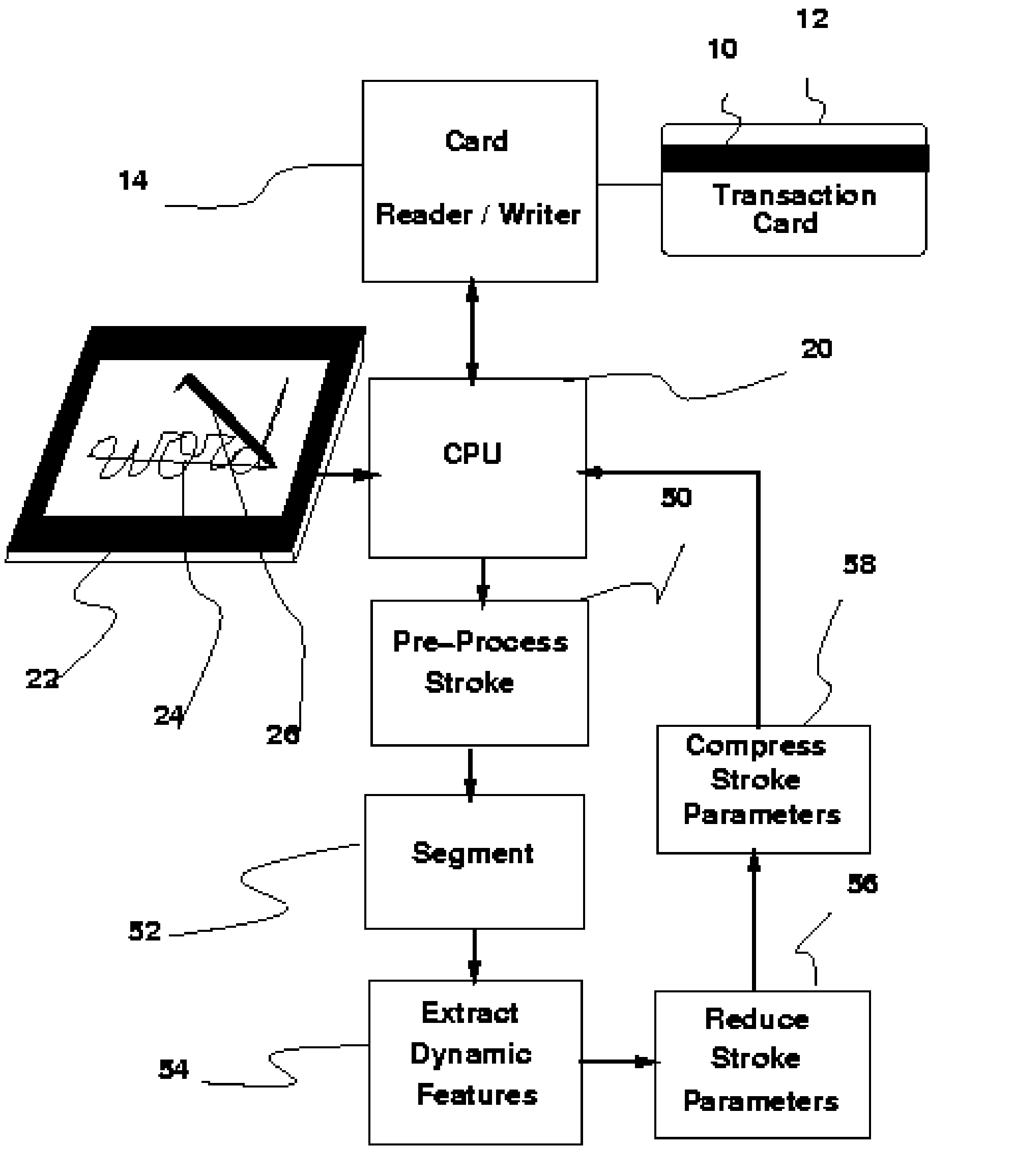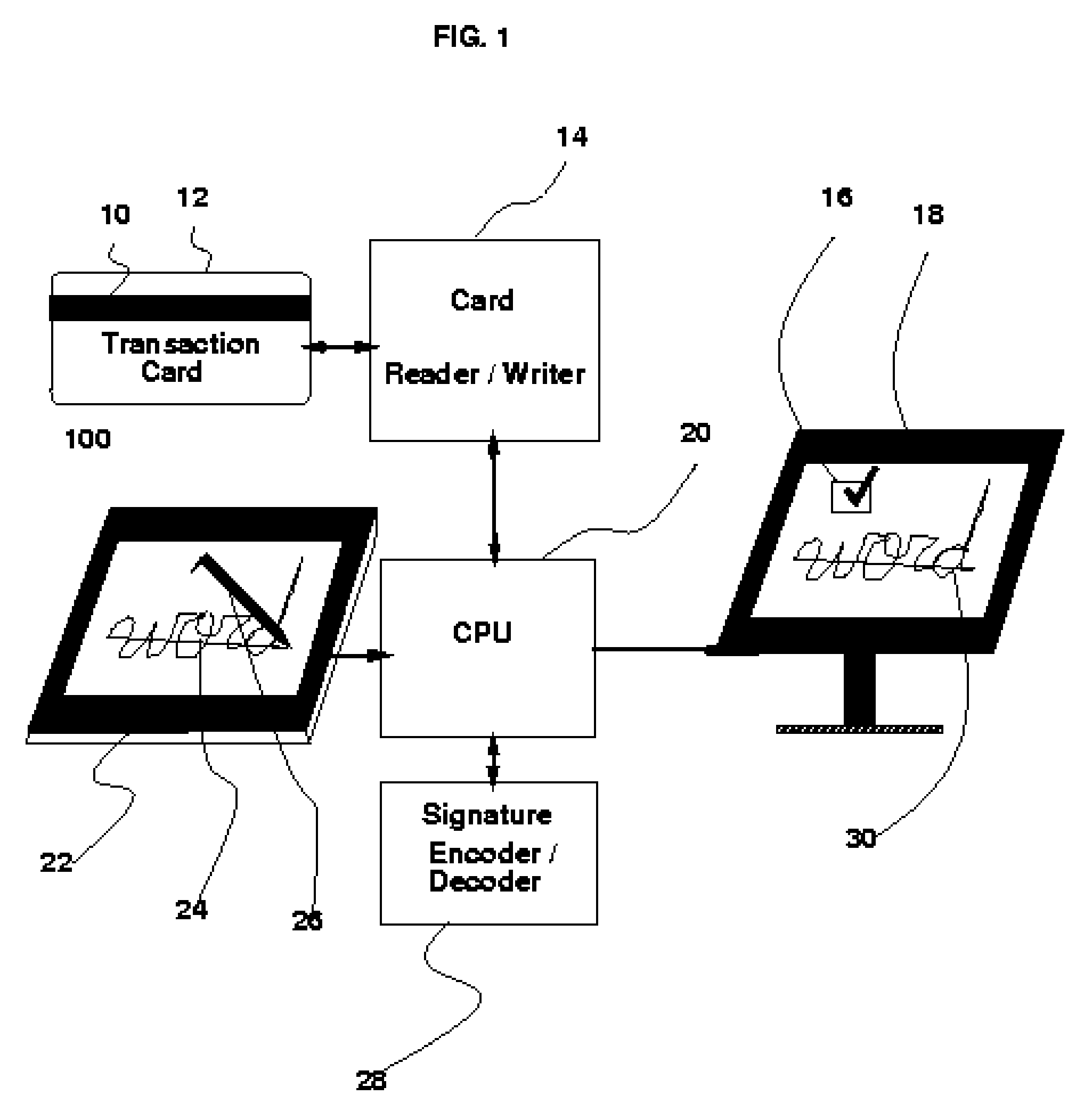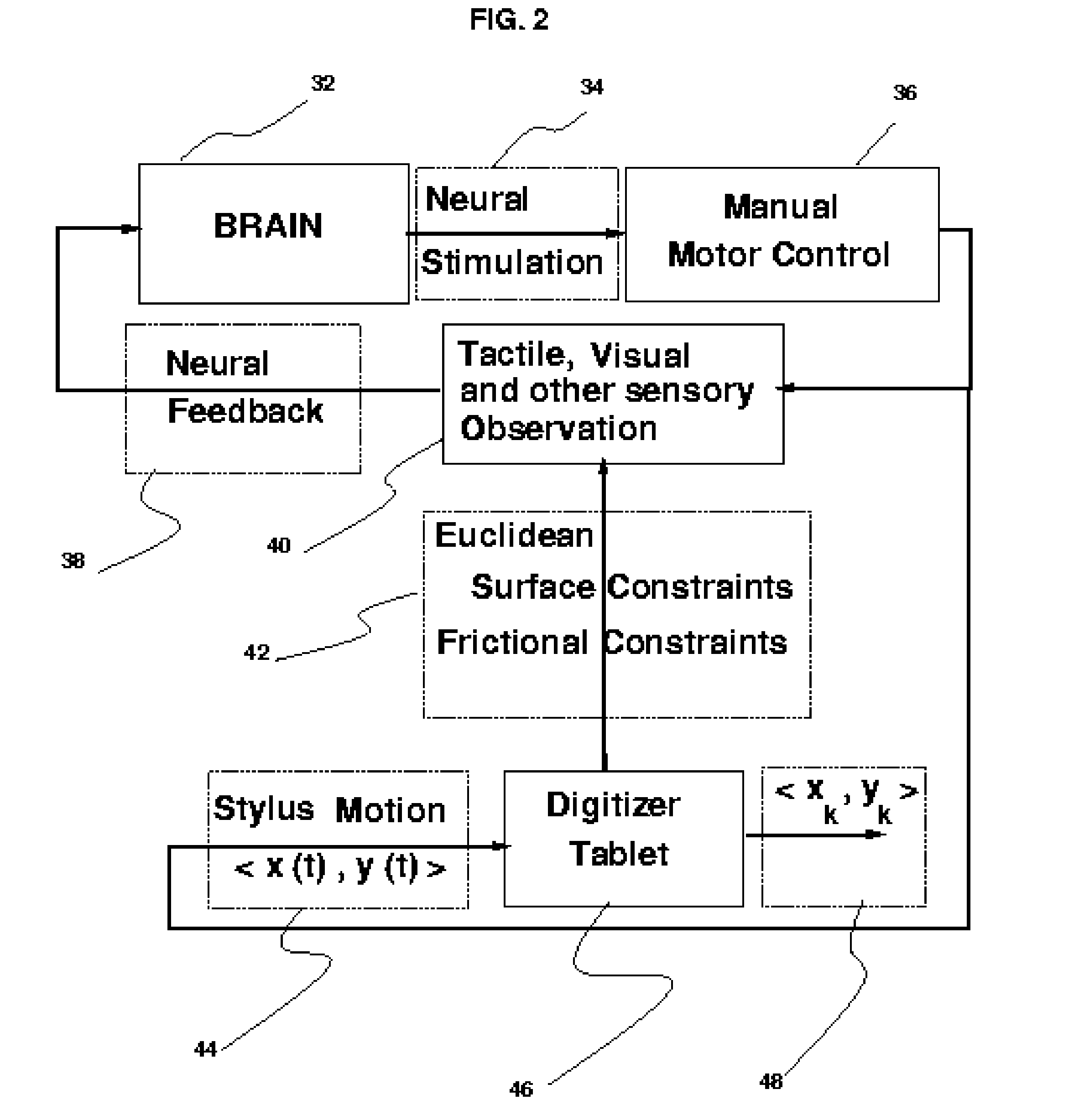Method and Apparatus for Aggressive Compression, Storage and Verification of the Dynamics of Handwritten Signature Signals
- Summary
- Abstract
- Description
- Claims
- Application Information
AI Technical Summary
Benefits of technology
Problems solved by technology
Method used
Image
Examples
embodiment
Preferred Embodiment
[0024] Referring to FIGS. 1-8, a preferred embodiment of the present invention will be described below.
[0025] In FIG. 1, a schematic block diagram of the inventive system 100 is shown. System 100 includes an input device (digitizer tablet) 22 comprising a digital pen 26. The on-line signature 24 is entered by writing on the digitizer tablet using the digital pen. A Central Processing Unit (CPU) 20 is used to perform the needed temporary storage, computation and communication with other devices. One such device is the Card Reader / Writer 14 which is used to read or write information from / to the magnetic strips 10 on the back of a transaction card 12. Another device attached to the CPU is the display unit 18 which provides visual feedback to the merchant or operator at the time of the transaction. The system presented by this invention is capable of displaying the signature coded on the back of the transaction card 30 as well as the signature being entered by the p...
PUM
 Login to View More
Login to View More Abstract
Description
Claims
Application Information
 Login to View More
Login to View More - R&D
- Intellectual Property
- Life Sciences
- Materials
- Tech Scout
- Unparalleled Data Quality
- Higher Quality Content
- 60% Fewer Hallucinations
Browse by: Latest US Patents, China's latest patents, Technical Efficacy Thesaurus, Application Domain, Technology Topic, Popular Technical Reports.
© 2025 PatSnap. All rights reserved.Legal|Privacy policy|Modern Slavery Act Transparency Statement|Sitemap|About US| Contact US: help@patsnap.com



